Unrealized projects: What could the Kremlin and Red Square have looked like?

To demolish one palace and build another
In the 18th century, Peter the Great moved the capital of the Russian Empire from Moscow to the newly built St. Petersburg. Moscow lost its significance and the Kremlin lost its status of the residence of the tsars.
Numerous palaces and princely chambers inside the Kremlin became empty as all the nobility followed the tsar to the new capital. The buildings were starting to fall apart, so in the second half of the 18th century, Catherine the Great's favorite architect, Vasily Bazhenov, proposed a large-scale plan for rebuilding the Kremlin.
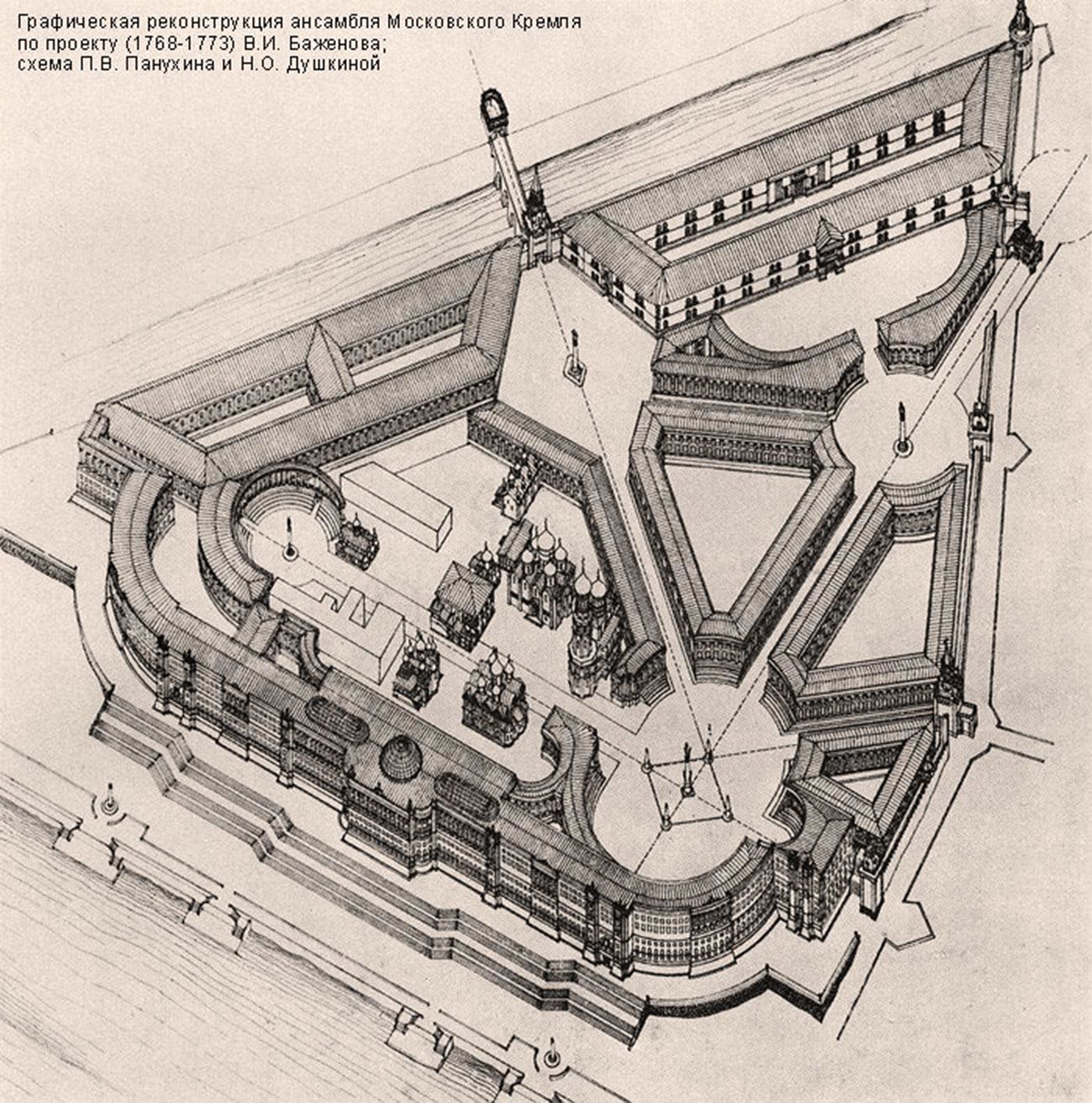
Graphic reconstruction of Vasily Bazhenov's project
Public domainHe proposed demolishing most of the old buildings and walls and building a Grand Kremlin Palace, which would surround Cathedral Square and go down to the Moskva River along Borovitsky Hill.
Work had already begun on the project and parts of the old Kremlin walls had been torn down when cracks appeared in the wall of one of the cathedrals. In addition, the construction was considered too wasteful, so the walls were put back up, and the project was abandoned.
Regular avenues and modern government buildings
In the 18th century, most of the buildings in Moscow were wooden, so the city suffered from numerous fires. At the end of the century, architect Pyotr Kozhin, who headed the so-called Stone Prikaz (the state body that managed the production and use of stone), developed a city reconstruction plan, which envisaged the construction of stone buildings. He also submitted to Catherine the Great another project for rebuilding the Kremlin.
The architect had no plans to demolish any of the old buildings, but wanted to build regular avenues and modern government buildings in the city center. In the end, this large-scale project was not implemented either as Kozhin was assigned to deal with more pressing problems facing the city.
However, Catherine the Great did order a new building in the Kremlin in the classical style. It was supposed to house the Senate. Thus the Senate Palace was built, which is now used as the residence of Russian president.
Metro right under the Kremlin walls
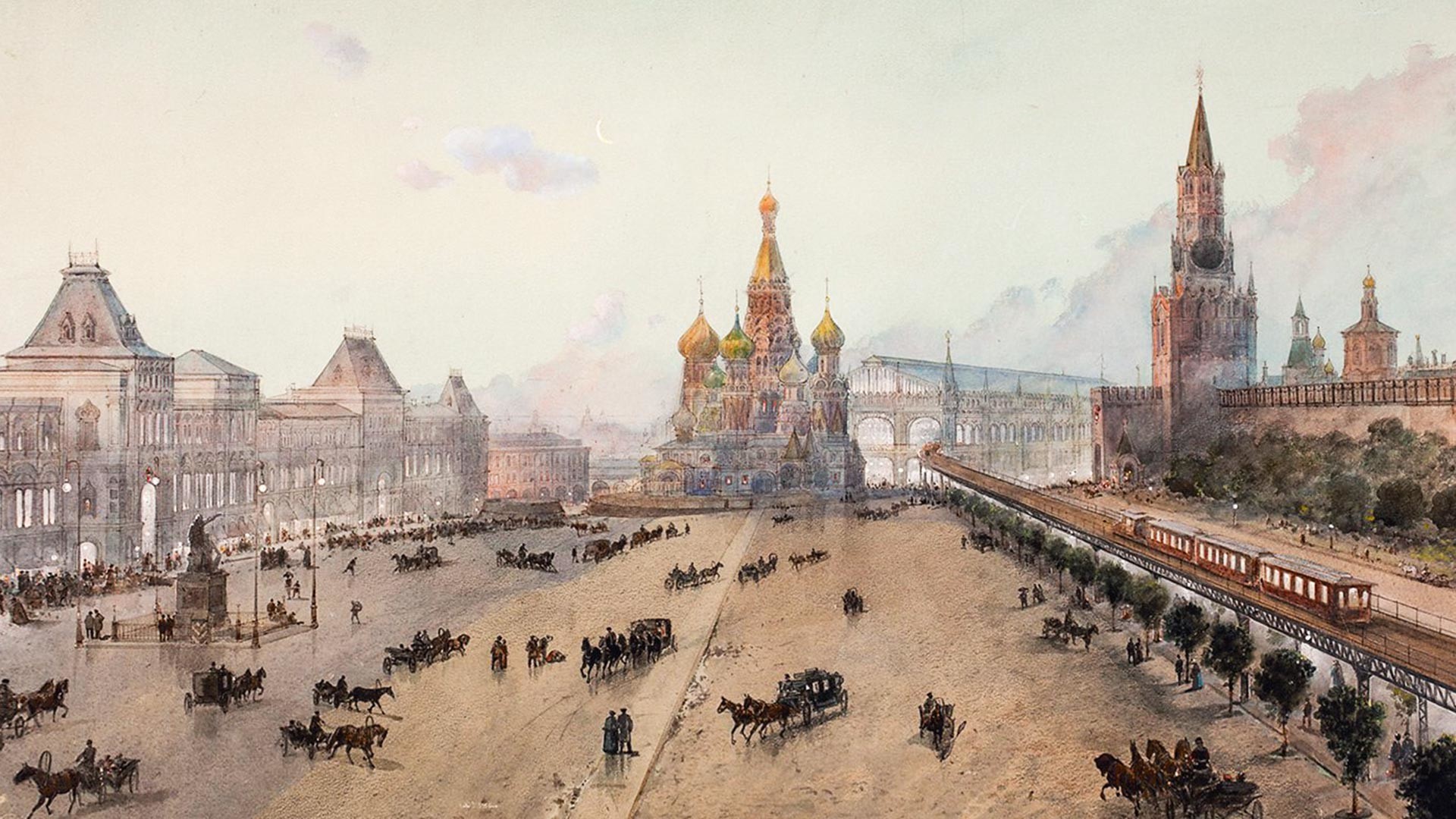
N.Karazin. Metro and central railway station right on the Red Square under P.Balinsky's project
Museum of MoscowThe first plans to build a metro in Moscow were proposed in the late 19th century by engineers Pyotr Balinsky and Yevgeny Knorre. Under their project, a railway was supposed to go around the whole of Moscow and in the city center run underground. They also proposed building a central railway station right on Red Square, by the Kremlin walls. Nicholas II took against this idea from the start.
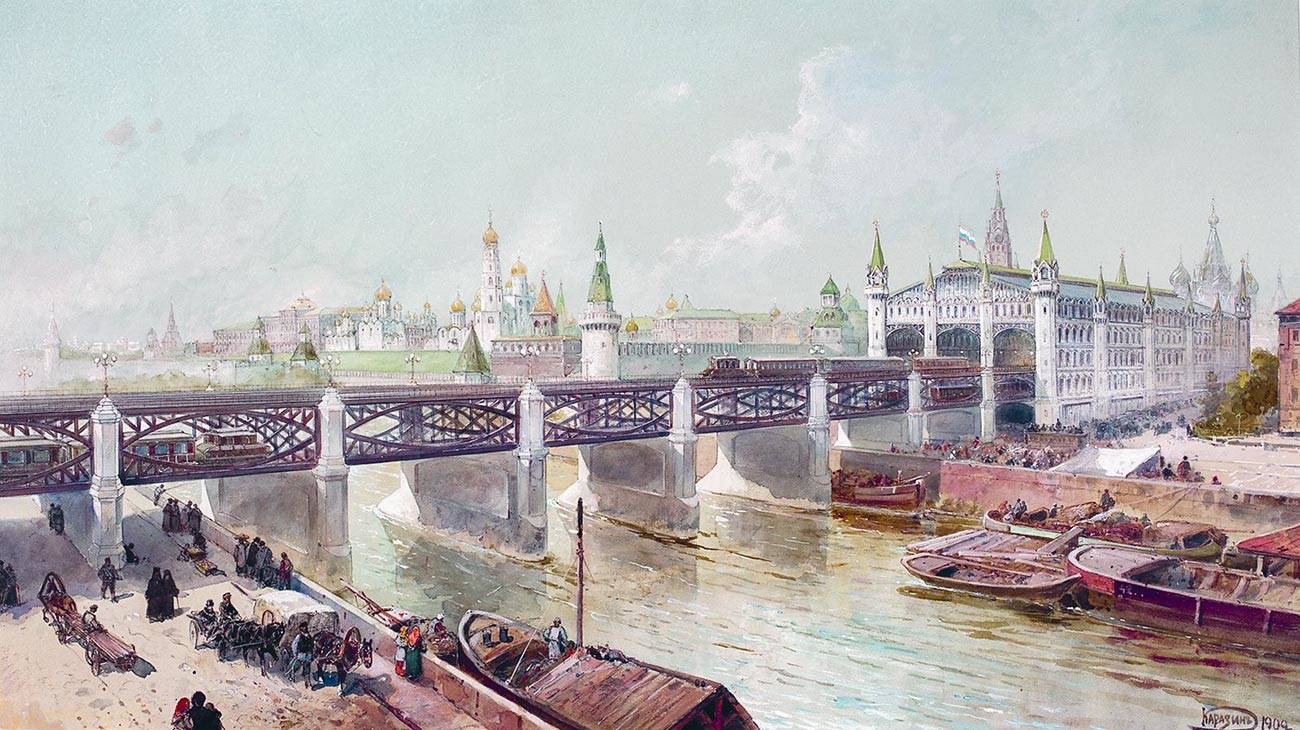
N.Karazin. Metro bridge above the Moskva River under P.Balinsky's project
Museum of MoscowThe engineers proposed building a huge two-level railway bridge straight from the Kremlin along Vasilyevsky Spusk and across the Moskva River... In the end, the project had too many opponents, and it was decided that it would ruin the city's looks.
Narkomtyazhprom building in Red Square
Until 1860, when the Cathedral of Christ the Savior was built in Moscow, the tallest building in the city was the Ivan the Great Bell Tower in the Kremlin. Legend has it that there was a ban on buildings anything taller than the bell tower in the city.
However, Bolsheviks did not care whatsoever about any tsarist bans. The new Soviet government moved from St. Petersburg to Moscow. Furthermore, government members moved to live inside the Kremlin. (The last Soviet official to leave it was Kliment Voroshilov, who lived there with his family until 1962.)
In 1935, Stalin signed a general plan for the reconstruction of Moscow, which envisioned building new avenues, widening Tverskaya street - just renamed Gorky Street that year, until it returned to its old name in 1990. The project even demanded moving several houses). In addition, a competition was announced for the construction of the Ministry of Heavy Industry - Narkomtyazhprom.
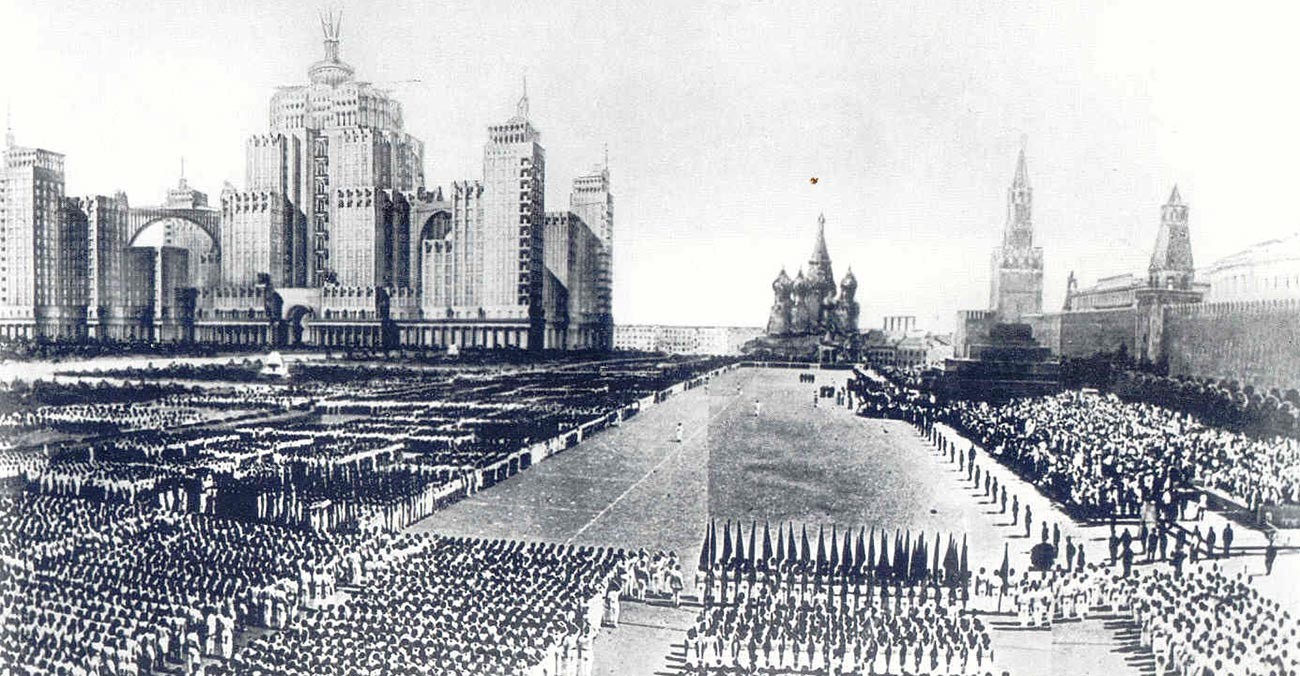
One of the designs for the Ministry of Heavy Industry (Narkomtyazhprom)
Public domainThere were several designs, with all the architects proposing gigantic buildings, which would have required expanding Red Square and demolishing the shopping arcade (the present-day GUM department store). The Kremlin looked simply lost against the background of those gigantic buildings. Fortunately, none of these projects was ever implemented.
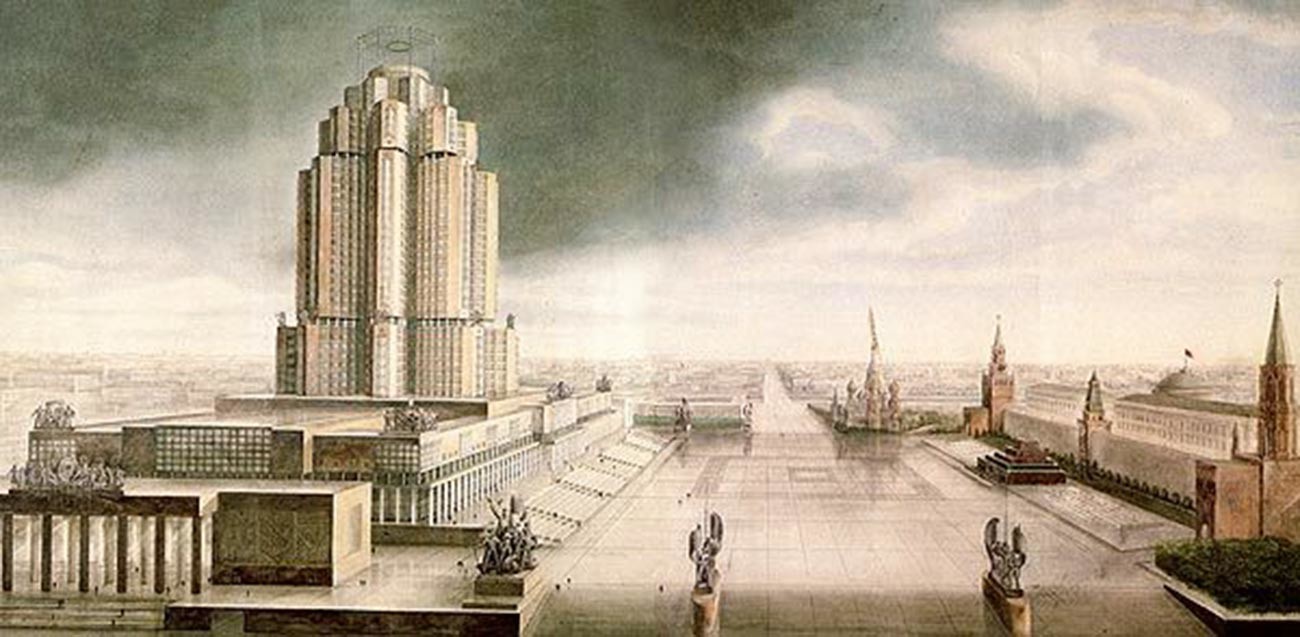
One of the designs for the Ministry of Heavy Industry (Narkomtyazhprom)
Public domainIf using any of Russia Beyond's content, partly or in full, always provide an active hyperlink to the original material.
Subscribe
to our newsletter!
Get the week's best stories straight to your inbox